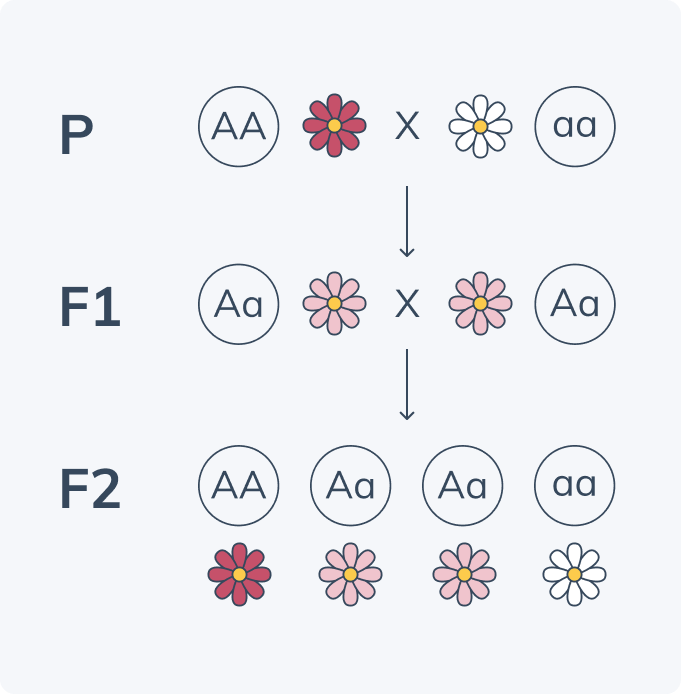Everyone has a genetic code, but which genes do we actively use and why? That’s where epigenetics comes into play. Keep reading to learn more about gene expression and how epigenetics affects our lives each and every day.

What is epigenetics?
Epigenetics can be defined as the study of modifications that impact our gene expression without changing our core, deoxyribonucleic acid (DNA) sequence. (6) These changes can occur via inheritance passed from our parents or through non-heritable changes. The DNA in our genome consists of intensely packaged chromatin, which is double-stranded DNA and its associated proteins. (6) Nucleotides are the building blocks of our DNA, thus while epigenetic modifications of proteins or via different processes may affect gene expression, the sequence of the nucleotides is not altered by this. Many examples of epigenetic processes are post-translational, meaning they occur after the stage of DNA processing when our messenger ribonucleic acid (RNA) has decoded into a protein product. (13) By turning genes “off” or “on,” our epigenetics help determine our observable traits, or phenotype, and which genes in general will become expressed. (4)(10)
Ready to start delivering better patient care?

Phenotype and environmental influences
Our phenotype is our observable traits, and it can be influenced by genetic factors as well as environmental ones which influence our epigenetics. (10) Examples of environmental influences that can affect our epigenetics and phenotype include the following:
- Smoking
- Physical activity
- Diet and nutrition
- Alcohol consumption
- Exposure to pollutants (such as heavy metals or pesticides) (2)
Epigenetics, genetics, and genomics, oh my!
To understand epigenetics, it helps to first define genetics which can be thought of as characteristics and information passed through inheritance. This science of heredity can be traced back to Gregor Mendel, who studied pea plants in the mid-late 1800s. (6) In his work, he crossbred pea plants and recorded the variations and frequencies of different phenotype characteristics amongst the offspring. The following seven qualities were studied:
- Plant height (tall or short)
- Seed color (yellow or green)
- Seed shape (smooth or wrinkled)
- Seed-coat color (gray or white)
- Pod shape (full or constricted)
- Pod color (green or yellow)
- Flower distribution (along the stem or towards the end of the stem) (1)
His notes on the different outcomes of the generations of plant offspring, via cross breeding or hybridization, helped to shape our current understanding of chromosomal theory, molecular biology, and concepts such as dominant or recessive traits, codominance, and incomplete dominance. (1)(6)
Epigenetics, genetics, and genomics all play integral roles in our health and wellness journeys. Genetics is the study of our genes and how they affect us; genomics is the study of all our genes (our genome); and epigenetics is the study of how our non-genetic factors, such as environmental, lifestyle choices, and behaviors, affect the expression of the genes on our genomes. (7) The biggest difference between epigenetics and genetics is that epigenetic changes are reversible while genetic changes are not. (7)

How does epigenetics work?
Epigenetics turns genes “on” and “off” via a multitude of processes. While there are many post-translational epigenetic processes, we’ll focus on two major examples: DNA methylation and histone modification. (7)
DNA methylation
A methyl group is a carbon atom attached to three hydrogen atoms, and methylation of DNA occurs when a methyl group is added to a DNA molecule by enzymes called transferases. (7)(9)(12) When this occurs at certain sites of the DNA, DNA may no longer be “readable” by proteins, thus methylation in epigenetics typically turns genes “off”. Demethylation, the process by which a transferase enzyme removes a methyl group, contrarily, typically turns genes back “on” by allowing those genes to again be “readable”.
Histone modification
Histones are proteins largely associated with chromatin, and their modification also plays a major role in epigenetics. Specifically, histones are what DNA wraps around, and when DNA is tightly wound, it is more difficult to be “read” by proteins. (7) Contrarily, when DNA is loose and less packaged by histones, it can be more easily “read” by proteins for biological processes. (7) By adding certain chemical groups, histones can be either removed or added, thereby turning genes “on” or “off,” respectively.
Epigenetics and health
Epigenetics can both influence health and be influenced by our health state. For example, microbes like bacteria and viruses can hack our epigenetics, weakening our immune system, and epigenetic mutations can make us more likely to develop certain illnesses like cancer. (7) Some epigenetic research shows that the lifestyle factor of tobacco smoking may increase one’s risk of lung cancer at the level of DNA methylation. (5)(11) Epigenetics plays a huge role in prenatal health, where the nutritional status of the mother and the food she eats while pregnant can largely influence the development of the fetus and propensity for illness later in life, also at the level of methylation. (7) DNA methylation levels are even utilized as a test for screening and diagnosing certain conditions, such as colorectal cancer. (3)
The bottom line
While we can’t readily modify our genetics, we do have the power to modify our behavior and lifestyle factors, thus potentially improving our epigenetics. Examples include staying hydrated, eating nutritionally, balanced meals, and exercising regularly. Always speak to your health care provider before making any major lifestyle or health changes.
Ready to start delivering better patient care?





